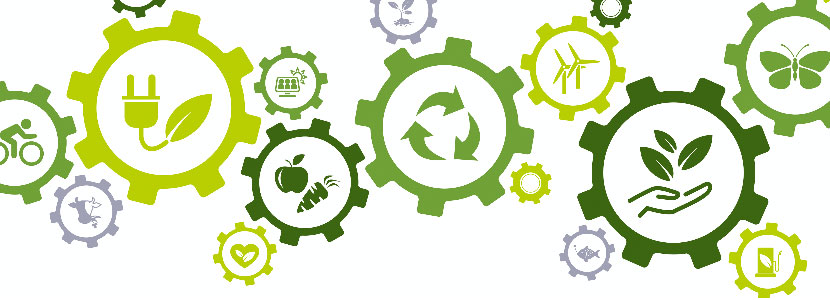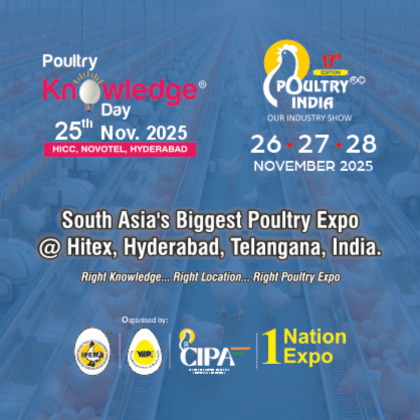Content available at: Español (Spanish)
There was once a time when the older generation mentioned that it was possible to eat chicken in the 40’s or 50’s only during Christmas season. Today that is an inconceivable notion, especially when poultry-based protein, be it in the form of meat or egg, is present on all our shelves, and is also the cheapest animal protein.
In a time when the livestock sector is at the epicenter of public debates in Europe and beyond, certain interest groups aim to spread myths and radical perspectives. They’re increasingly present in social networks and the press, and represent an image that brutally contrasts with the reality that thousands of European farmers experience daily, as well as the professionals who work with them.
These debates have a strong impact on consumer opinion about the role of animal products and their lifestyle choices. Similarly, they also push the sector into a corner of society. All this negatively affects the European Union’s livestock model and on the political framework, multiplying the challenges facing our farming communities in terms of ensuring their economic viability, generational renewal and their ability to adapt to social and environmental requirements.
As stated in a press release by the “European Livestock Voice”, the EU’s livestock model, whose farms have a diversified, local and family structure, is the backbone of the EU’s rural areas. In addition to supporting numerous jobs and industries, it contributes to the circular approach of the European Union’s bio-economy.
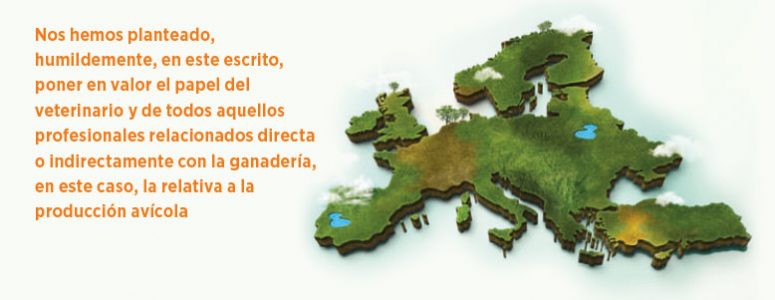
An ‘exit’ of the sector from Europe would cause:
- Loss of essential pasture land
- Increased forest fires
- Vast grounds devoid of organic fertilizers, green energy and many other raw materials and would amplify rural exodus.
At the same time, it would be forced to depend on imports, losing control over production standards and increasing the demand for materials and materials derived from fossil fuels. 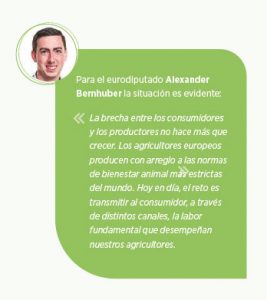
Improving livestock efficiency
In this line, and emphasizing society’s lack of knowledge regarding poultry production, it is important to start by pointing out that veterinary medicine has been improving livestock efficiency for 50 years:
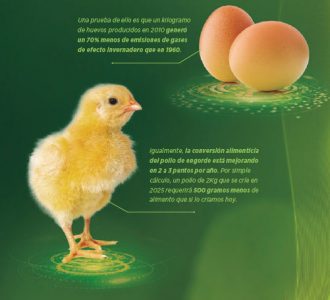
Livestock are responsible for the lives of almost 1.3 billion people, representing 40% of the agriculture produced by developed countries and 20% in developing countries, providing essential sources of food.
Animal production forms an integral part of the human food chain with the livestock sector currently accounting for 28% of the daily consumed protein.
In this context, poultry farming has the best feed conversion rate with the lowest environmental footprint in terms of resources per kilogram of meat or egg produced. The sector has been the least environmentally damaging animal protein chain, because:
- It requires much less water per ton of produce when compared to swine or cattle products.
- The surface required to produce a kilogram of meat is minimal compared to that of pork and especially with that of cattle.
- Greenhouse Gas emissions are much lower than those of its counterparts; representing 4% of total emissions, either directly or indirectly through its supply chain.
- The commercial use of meat is equivalent to 50% of the bird’s live weight, higher than 45% for pigs and 36% for cows.
Based on this, poultry farming is expected to be able to develop, interacting with these four areas in a synergic manner and guiding its actions with a broad respect for the resources inherent to each one of them.
Currently, it is no longer enough to comply with only these parameters to ensure the competitiveness, acceptance and recognition of the activity. The world changed and the rules with it. Consequently, in modern poultry farming it is now also required to verify its level of responsibility, in other words, its degree of sustainability.
News in animal production & agribusiness
Currently there are three issues and interrelated forces acting on animal production in general and on agribusiness in particular:
- Demand for products of animal origin
Firstly, the demand for animal products will double by 2050 (FAO, 2011). This increase will be a consequence of the increasing world population, their new consumption habits and expansion of cities. The world population will have reached about 10 billion people by 2050, and this represents an increase of more than 70% in the demand for animal proteins.
Healthy animals
Healthy animals require fewer resources (feed, water, energy and land use), which implies a reduction in emissions by 40%. Healthy animals enable farmers to provide a secure supply of milk, meat and eggs to their families and communities. In developed countries, improved sanitation has helped double meat production, and reduced land use by 20%.
Antimicrobial resistance
In line with the previous paragraph, and in relation to antimicrobial resistance, a team of researchers led by Thomas Van Boeckel, professor at the Federal Polytechnic School of Zurich, has published a map of antibiotic resistance in animals in the journal Science in this group of low- and middle-income countries.
“Beyond the serious consequences for public health, the reliance on antibiotics to meet the demand for animal protein is a threat to the sustainability of the animal production industry and therefore to the livelihoods of livestock farmers. around the world.”
In the global resistance maps, collected in the study, resistance “hot spots”are identified in regions such as northeast India and China, Northern Pakistan, Iran, Eastern Turkey, the Southern coast of Brazil , Egypt, the Red River delta in Vietnam and the areas surrounding Mexico City and Johannesburg. Likewise, areas are identified where resistance is beginning to emerge, such as Kenya, Morocco, Uruguay, Southern Brazil, Central India and Southern China. The highest rates of resistance were observed in all the antibiotics most commonly used in animal production such as tetracyclines, sulfonamides, and penicillins.
- Agricultural production in sustainable systems
Second, the wish that all agricultural production on the planet should be carried out in sustainable systems. In this sense, the environmental management of farms also deserves much attention due to the extent of its interaction with the environment.
- Impact of climate change
Third, we must consider that the impact of climate change (global warming) will affect the sustainability and productivity of our production systems. We are concluding, not without highlighting once again how poultry farming has made possible the improvement of the social condition of poor farmers, especially women. 70% of income in resource-poor countries comes from livestock. Increasing the resilience and productivity of smallholder livestock keepers helps reduce inequalities and creates a pathway out of poverty.
Mozambique
In many countries, poultry farming is a women’s issue. In southern Mozambique, raising chickens allows women to buy their own goats. In Senegal, for example, a small goat is worth between five and six hens.
A Mozambican widow explains:“The chickens allow me to buy shoes, this piece of cloth and this shawl.”
Poultry products can be sold or exchanged to pay for school or medical expenses or to buy oil, salt and other basic necessities. Market-oriented family poultry businesses can be the first step in enabling poor households to break out of the vicious cycle of poverty and deprivation.
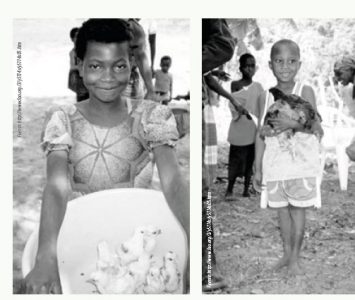
Photos 1 & 2. Children in Mozambique raise their own chickens in order to sell them for the purchase of books and other items (Photo: Robyn Alders)
In the egg sector for example, improvements in genetics, nutrition, animal husbandry, disease control and chicken management have increased sustainability rates, including reducing GHG emissions and water consumption by egg producers, as recently highlighted by the Sustainable Agriculture Technology Platform.
Sustainable development of the poultry sector
The sustainable development of the poultry sector can play a key role in achieving the United Nations Sustainable Development Goals. A lot can be done to improve the livelihoods of the millions of people who depend on poultry for a living. Additionally, it can also help provide affordable protein and micronutrients to the malnourished, improve public health, mitigate climate change (as poultry systems can be environment-friendly), and generate more benefits … If you want to read the full article download the PDF
